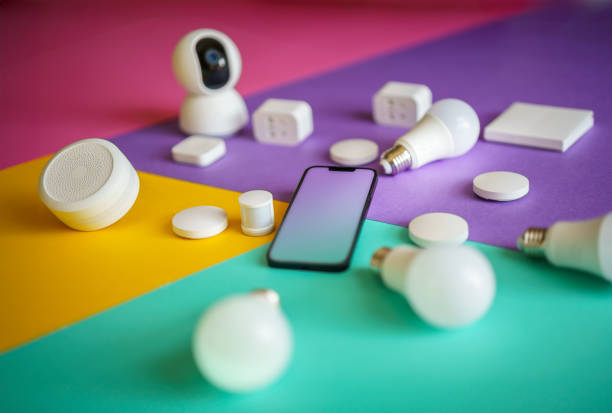How To Design A Secure IoT Ecosystem For Healthcare Applications

Think about a city or an area where patients can receive personalized care from anywhere in the world. A world where doctors can monitor their patients’ vital signs remotely and detect potential problems early on. A world where medical devices can communicate with each other and share data to provide better care.
This world is possible with IoT (Internet of Things) ecosystems for healthcare applications.
IoT ecosystems for healthcare applications are networks of connected devices that collect and share data about patients’ health.
These devices can include things like wearable fitness trackers, smart insulin pumps, and remote monitoring devices.
In this article, we will take a look at How to design a secure IoT ecosystem for healthcare applications.
Why are IoT ecosystems for healthcare applications important?

IoT ecosystems for healthcare applications are important for a number of reasons:
- They can improve the quality of care. IoT ecosystems can help doctors to provide better care by providing them with real-time data about their patients’ health. This data can be used to detect potential problems early on and to provide personalized care.
- They can reduce the cost of care. IoT ecosystems can help to reduce the cost of care by enabling remote monitoring and telemedicine. This can reduce the need for patients to travel to see a doctor in person.
- They can improve patient access to care. IoT ecosystems can improve patient access to care by making it easier for patients to receive care from anywhere in the world. This is especially important for patients who live in rural or underserved areas.
How to design a secure IoT ecosystem for healthcare applications
ResearchGate says when designing an IoT ecosystem for healthcare applications, it is important to keep security in mind. Healthcare data is sensitive and needs to be protected from unauthorized access.
Here are some tips for designing a secure IoT ecosystem for healthcare applications:
- Use strong authentication and authorization mechanisms. All devices in the ecosystem should be authenticated and authorized before they are allowed to access data. This can be done using a variety of methods, such as passwords, certificates, and biometric authentication.
- Encrypt all data. All data that is transmitted between devices in the ecosystem should be encrypted. This will help to protect the data from unauthorized access, even if it is intercepted.
- Use secure communication protocols. All communication between devices in the ecosystem should use secure communication protocols. This will help to protect the data from being tampered with or intercepted.
- Implement security monitoring and alerting. The ecosystem should be monitored for security threats and alerts should be generated when threats are detected. This will help to identify and respond to security threats quickly.
Tips for keeping your IoT ecosystem for healthcare applications secure
Here are some tips for keeping your IoT ecosystem for healthcare applications secure:
- Keep all devices up to date. Make sure that all devices in the ecosystem are running the latest software updates. This will help to patch security vulnerabilities that could be exploited by attackers.
- Use strong passwords and change them regularly. Use strong passwords for all devices in the ecosystem and change them regularly. This will make it more difficult for attackers to gain access to your devices.
- Be careful about what apps you install. Only install apps from trusted sources. Avoid installing apps from unknown sources, as these apps could contain malware.
- Be aware of phishing scams. Phishing scams are attempts to trick you into revealing sensitive information, such as passwords or credit card numbers. Be careful about emails and text messages that you receive, especially if they ask you for sensitive information.
Frequently asked questions about How to design a secure IoT ecosystem for healthcare applications
What is an IoT ecosystem for healthcare applications?
An IoT ecosystem for healthcare applications is a network of connected devices that collect and share data about patients’ health.
According to IGI Global, these devices can include things like wearable fitness trackers, smart insulin pumps, and remote monitoring devices.
Why are IoT ecosystems for healthcare applications important?
IoT ecosystems for healthcare applications are important for a number of reasons:
- They can improve the quality of care.
- They can reduce the cost of care.
- They can improve patient access to care.
How do I design a secure IoT ecosystem for healthcare applications?
Here are some tips for designing a secure IoT ecosystem for healthcare applications:
- Use strong authentication and authorization mechanisms. All devices in the ecosystem should be authenticated and authorized before they are allowed to access data. This can be done using a variety of methods, such as passwords, certificates, and biometric authentication.
- Encrypt all data. All data that is transmitted between devices in the ecosystem should be encrypted. This will help to protect the data from unauthorized access, even if it is intercepted.
- Use secure communication protocols. All communication between devices in the ecosystem should use secure communication protocols. This will help to protect the data from being tampered with or intercepted.
- Implement security monitoring and alerting. The ecosystem should be monitored for security threats and alerts should be generated when threats are detected. This will help to identify and respond to security threats quickly.
How do I keep my IoT ecosystem for healthcare applications secure?
Here are some tips for keeping your IoT ecosystem for healthcare applications secure:
- Keep all devices up to date. Make sure that all devices in the ecosystem are running the latest software updates. This will help to patch security vulnerabilities that could be exploited by attackers.
- Use strong passwords and change them regularly. Use strong passwords for all devices in the ecosystem and change them regularly. This will make it more difficult for attackers to gain access to your devices.
- Be careful about what apps you install. Only install apps from trusted sources. Avoid installing apps from unknown sources, as these apps could contain malware.
- Be aware of phishing scams. Phishing scams are attempts to trick you into revealing sensitive information, such as passwords or credit card numbers. Be careful about emails and text messages that you receive, especially if they ask you for sensitive information.
What are some common security threats to IoT ecosystems for healthcare applications?
Some common security threats to IoT ecosystems for healthcare applications include:
- Data breaches. Data breaches occur when attackers gain unauthorized access to sensitive data. Data breaches can be caused by a variety of factors, such as hacking, malware infections, and human error.
- Denial-of-service attacks. Denial-of-service attacks are attacks that attempt to make a device or network unavailable to its intended users. Denial-of-service attacks can be caused by a variety of factors, such as flooding the network with traffic or exploiting vulnerabilities in devices.
- Malware infections. Malware is malicious software that can damage or disable devices. Malware infections can be caused by a variety of factors, such as clicking on malicious links, opening infected attachments, or installing malicious apps.
- Man-in-the-middle attacks. Man-in-the-middle attacks are attacks in which an attacker intercepts communication between two devices and impersonates one of the devices. Man-in-the-middle attacks can be used to steal data or to inject malicious code into devices.
What are some additional tips for securing IoT ecosystems for healthcare applications?
Here are some additional tips for securing IoT ecosystems for healthcare applications:
- Use a network segmentation strategy. Network segmentation involves dividing the network into different segments and isolating each segment from the others. This can help to contain the damage if an attacker gains access to one segment of the network.
- Use a firewall. A firewall is a device or software program that monitors and controls incoming and outgoing network traffic. A firewall can help to block unauthorized access to the network and to protect against denial-of-service attacks.
- Use an intrusion detection system (IDS). An IDS is a device or software program that monitors network traffic for suspicious activity. An IDS can help to detect malware infections, man-in-the-middle attacks, and other security threats.
- Educate your employees about security best practices. Employees should be trained on how to identify and report security threats. They should also be trained on how to use passwords securely and how to avoid phishing scams.
Conclusion
IoT ecosystems for healthcare applications have the potential to revolutionize the way that healthcare is delivered.
However, it is important to keep security in mind when designing and deploying these ecosystems. By following the tips above, you can help to protect your IoT ecosystem for healthcare applications from security threats.
I believe that IoT ecosystems for healthcare applications have the potential to make the world a better place. By making it easier for people to receive high-quality healthcare, IoT ecosystems can help to improve people’s lives.
If you are involved in the design or deployment of IoT ecosystems for healthcare applications, I encourage you to make security a top priority.
By following the tips above, you can help to protect these ecosystems from security threats and ensure that they are used to deliver safe and effective healthcare.








